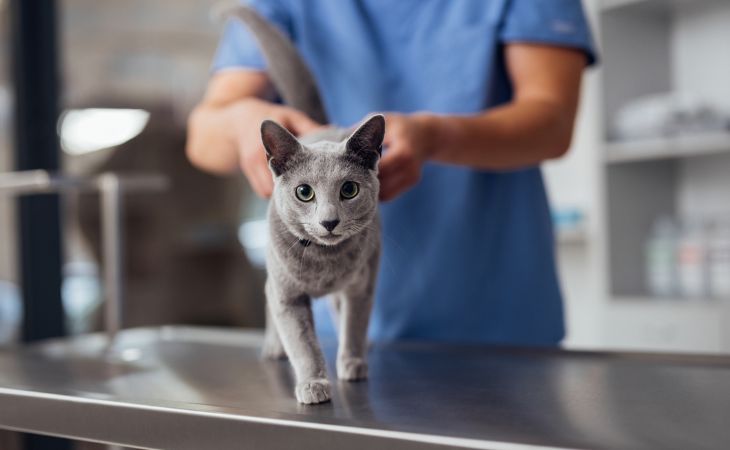Spaying or neutering a cat is a responsible act that you can do to prevent cat overpopulation. It also helps reduce the amount of abandoned cats and kittens. In this article, Letsgetpet will break down the subject so that you can learn all you need to know about sterilization and its advantages.
Why should you spay or neuter your cat?
One single female cat can give birth to more than a dozen kittens per year. Unfortunately, many of these kittens are abandoned or become strays. The luckiest of them are rescued and put up for adoption at animal shelters and rescues. Spaying or neutering your cat is a responsible act that has many advantages. You can avoid unplanned pregnancies and prevent cat overpopulation.
Its simple—if more cats were spayed or neutered, there would be less abandoned cats. Spaying or neutering your cat also helps to prevent health issues related to the secretion of sex hormones. For female cats, spaying prevents tumors in the mammary glands, uterus, and ovaries. Moreover, it can prevent infections. Spaying also eliminates undesirable behavior related to heat:
- excessive or desperate meowing,
- constantly demanding attention,
- disinterest in food and toys,
- insistent needs to go out,
- relieving themselves outside of the litter box.
Spaying or neutering eliminates heat, which can often last for up to 8 consecutive months beginning at puberty. These procedures also reduce the number of suitors fighting around your home, giving you more peace of mind. When it comes to male cats, neutering reduces urine marking, running away, fighting, and other types of undesirable behavior. This procedure also helps them avoid wounds, abscesses, and viruses like leukemia and feline immunodeficiency.
A neutered cat will return home from their outings easier. They will also return home more often and dedicate more time to grooming themselves. Because of this, their fur is generally cleaner and less tangled than that of a cat that hasn’t been sterilized.
How is spaying and neutering done?
For male cats, neutering is a minor surgery that takes around 15 minutes to perform. There is no reglementary age to conduct this operation. You just need to wait until their testicles have descended or developed. On the other hand, spaying female cats requires a slightly longer anesthetic, lasting around 30 minutes or more. For this procedure, the vet needs to open their abdominal cavity and take out their ovaries.
After around 10 to 14 days, the vet will need to remove a few of the stitches around their abdomen. For the surgery itself, you need to bring your pet to the vet on an empty stomach. Your cat needs to stay at the vet clinic for around half a day. When they are under anesthesia, an analgesic injection is given to them to limit their pain upon awakening. The vet makes two small incisions on the cat’s flanks, or sometimes a single incision below the navel.
After the extraction of the ovaries, the wound is is sutured with threads that fall out on their own after a few weeks. In some cases, when female cat are old, they can receive a contraceptive pill or if they are expecting kittens, their uterus must be removed.
After the surgery, you can bring your cat back to the house as soon as they have woken up. They can be a bit tired during the hours following the surgery, but this usually does not last very long. A spayed cat can return to her true self easily just a few days after her surgery. Antibiotic treatment is usually given to promote recovery.

How much does spaying or neutering a cat cost?
In France, for a cat’s ovariectomy, you need to budget between 100 and 200 euros. Ovariectomies are carried out in clinics run by local and regional associations. It is often less costly at these centers, and sometimes can even be free for certain incomes. National veterinary schools in major cities such as Paris, Lyon and Nantes also offer cat sterilization at attractive rates.
However, tte price of this surgery can vary from region to region. And if you opt for chemical sterilization, you’ll have to pay more than for surgical sterilization. The difference between the two options is that surgical sterilization is definitive (removing the cat’s testicles or ovaries), while chemical sterilization is reversible.
The chemical sterilization procedure involves giving a contraceptive drug that blocks the cat’s cycle and stops her coming into heat. This may be a pill or an injection. Generally speaking, it’s enough to stop the treatment for the cat to become fertile again a few weeks later.
A few tips for the spaying or neutering of your cat
Before preparing to spay or neuter your cat, you need to prepare a budget for:
- their vaccines,
- microchipping,
- any eventual surgeries that need to be done.
Many cities in France have made spaying or neutering mandatory and many animal shelters and rescues propose procedures that are less expensive. The ideal age to sterilize a cat is between 5 to 6 months to reduce the risks of diseases related to sex hormones. Sterilizing a cat before their first heat reduces the risk of tumors. The later the procedure is performed, the less useful it is, with no beneficial effect beyond two years.
After the surgery, do not forget to feed your cat complete food and good quality food. Also, adjust your cat’s ration depending on their energy needs. Weigh your sterilized kitten every month to make sure their weight curve is increasing and reasonable, to avoid obesity problems. In some cases, spaying or neutering can lead to weight gain. Your cat can become more hungry and will ask to eat more often.
Do not give in when your cat asks you for food. Give them food at regular intervals without making them not eat enough. Opt preferably for kibble that is less rich and mix them with wet food with meat that is not too fatty. You can choose chicken, lamb, wild game, duck, tuna, or salmon. This mix will be enough to feed them what they need and prevent bulimic behavior.
This Letsgetpet article might interest you: Understanding the nutritional needs of cats
A few misconceptions about spaying and neutering
Contrary to what one might think, female cats do not feel that spaying is like mutilation. They do not need kittens to be happy. On the contrary, an unsterilized cat that isn’t able to get pregnant will develop issues and frustration. This can manifest itself as irritability, distant behavior, or obsessions. Hormonal disorders that can lead to uterine and ovarian tumors can also be noted.
Similarly, spaying or neutering does not lead to any real disadvantages for cats. This procedure simply keep cats’ hormones under control, making them calmer and less sexually active. Sterilization has a positive impact rather than a negative one on their environment and well-being. A stray cat that mates at will contributes to the burden on animal shelters and rescues.
Even if it’s not mandatory where you live, sterilization is a benevolent and responsible act. Sterilized cats adopt good behavior, avoiding urinating everywhere and fleeing. They also run fewer risks of injury and disease. Taking the initiative to spay or neuter your cat shows that you care about them and their health.
This Letsgetpet article might interest you: Male and female cats: what are the differences in everyday life?

